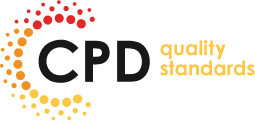10 SWOT Analysis Examples for Students
Before beginning your analysis, it’s beneficial to explore examples of SWOT Analysis to guide your approach.
Here are the most researched SWOT analysis for students in various contexts:
Personal SWOT Analysis for Student Leadership
Strengths: Strong communication skills, good team player.
Weaknesses: Limited experience in managing large projects.
Opportunities: Leadership training programs, networking with professionals.
Threats: Competition from other student leaders, time constraints.
SWOT Analysis for Nursing Students
Strengths: Strong passion for healthcare, good critical thinking skills.
Weaknesses: Limited clinical experience, time management challenges.
Opportunities: Internship programs, advanced nursing certifications.
Threats: Technological advancements changing healthcare practices, job market competition.
SWOT Analysis for Engineering Students
Strengths: Strong analytical skills, proficient in technical software.
Weaknesses: Limited practical experience, communication skills need improvement.
Opportunities: Internship opportunities, networking with engineering professionals.
Threats: Rapidly evolving technology, global competition in the engineering field.
SWOT Analysis for Law Students
Strengths: Strong research skills, good understanding of legal principles.
Weaknesses: Limited courtroom experience, time management challenges.
Opportunities: Legal internships, networking with law firms.
Threats: Changing legislation, saturation of the legal job market.
SWOT Analysis for Business Students
Strengths: Strong understanding of business principles, good at strategic planning.
Weaknesses: Limited practical business experience, lack of exposure to international business.
Opportunities: Business internships, networking with industry leaders.
Threats: Economic fluctuations, intense competition in the business world.
SWOT Analysis for Health and Social Care Students
Strengths: Strong empathy and compassion, good understanding of health issues.
Weaknesses: Limited practical experience in healthcare settings, time management challenges.
Opportunities: Internship programs at healthcare facilities, advanced healthcare certifications.
Threats: Changes in healthcare policies, shortage of healthcare professionals.
SWOT Analysis for MBA Students
Strengths: Strong business acumen, good at strategic decision-making.
Weaknesses: Limited industry-specific experience, need for further leadership development.
Opportunities: Networking with business executives, international business opportunities.
Threats: Economic uncertainties, intense competition in the business world.
SWOT Analysis for University Students
Strengths: Access to resources and support from university, opportunities for personal and professional development.
Weaknesses: Academic pressure, limited real-world experience.
Opportunities: Internships, networking events, academic clubs.
Threats: Competition for opportunities, economic challenges affecting job prospects.
SWOT Analysis for Art and Design Students
Strengths: Creativity and originality, strong visual communication skills.
Weaknesses: May face challenges in business aspects of art, such as marketing and sales.
Opportunities: Freelance projects, exhibitions, internships with design studios.
Threats: Highly competitive field, fluctuating demand for art and design work.
SWOT Analysis for Students Using AI to Write Essay
Strengths: Greater efficiency and accuracy in writing, ability to handle large volumes of research.
Weaknesses: May rely too heavily on AI and overlook critical thinking skills, potential for plagiarism.
Opportunities: Access to advanced technology, potential for improved grades and feedback.
Threats: Ethical concerns regarding the use of AI in writing, potential for AI to replace human writers.
Conclusion
In conclusion, a SWOT analysis is an invaluable tool for students to assess their current situation, identify areas for improvement, and develop strategies for success. By understanding their strengths, weaknesses, opportunities, and threats, students can make informed decisions, set realistic goals, and adapt to changing circumstances.
Conducting a SWOT analysis can lead to increased self-awareness, better decision-making, and enhanced academic and personal growth.
It is a powerful instrument that can assist students in navigating the challenges of university life and achieving their full potential.


![]() 8 minutes
8 minutes


































